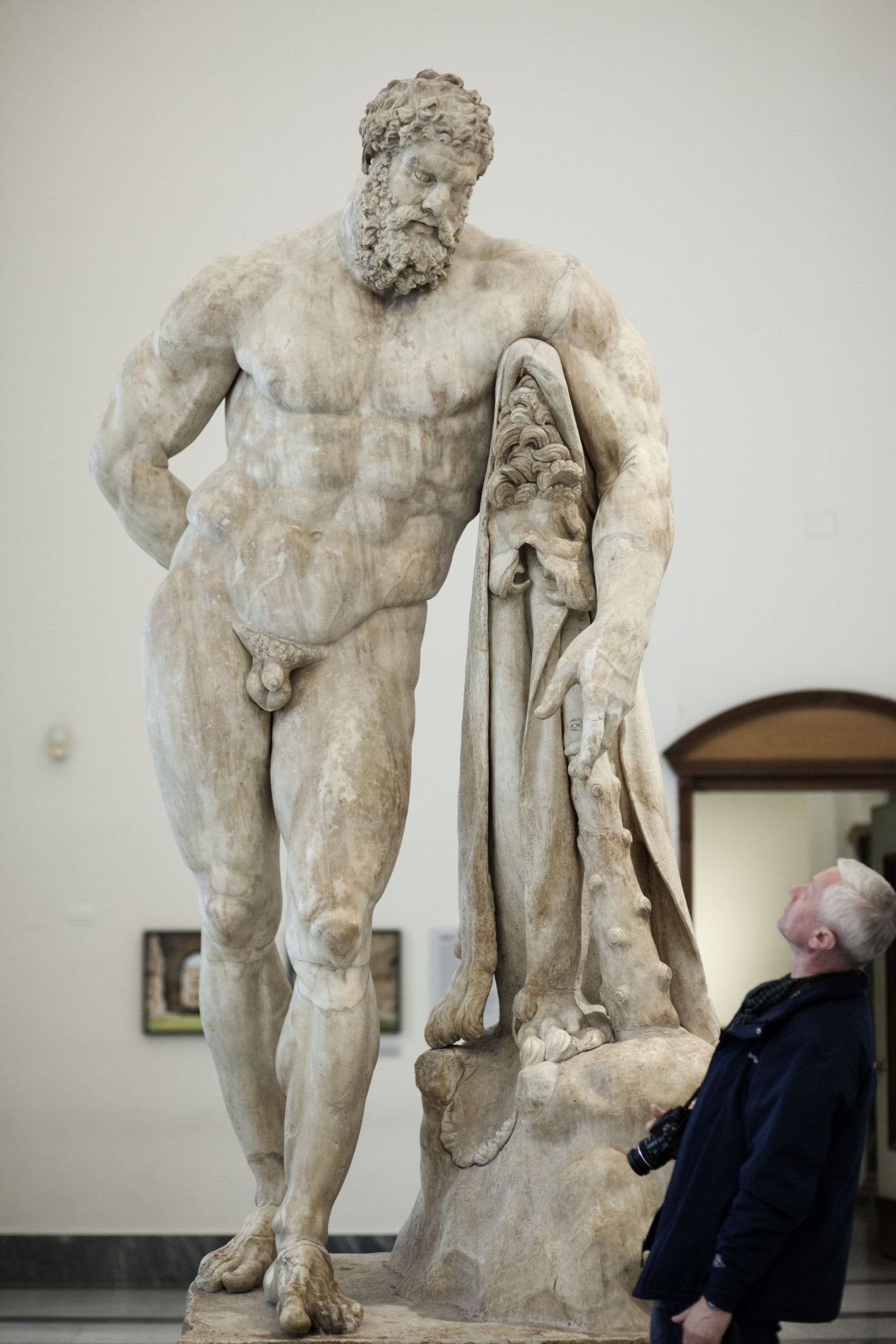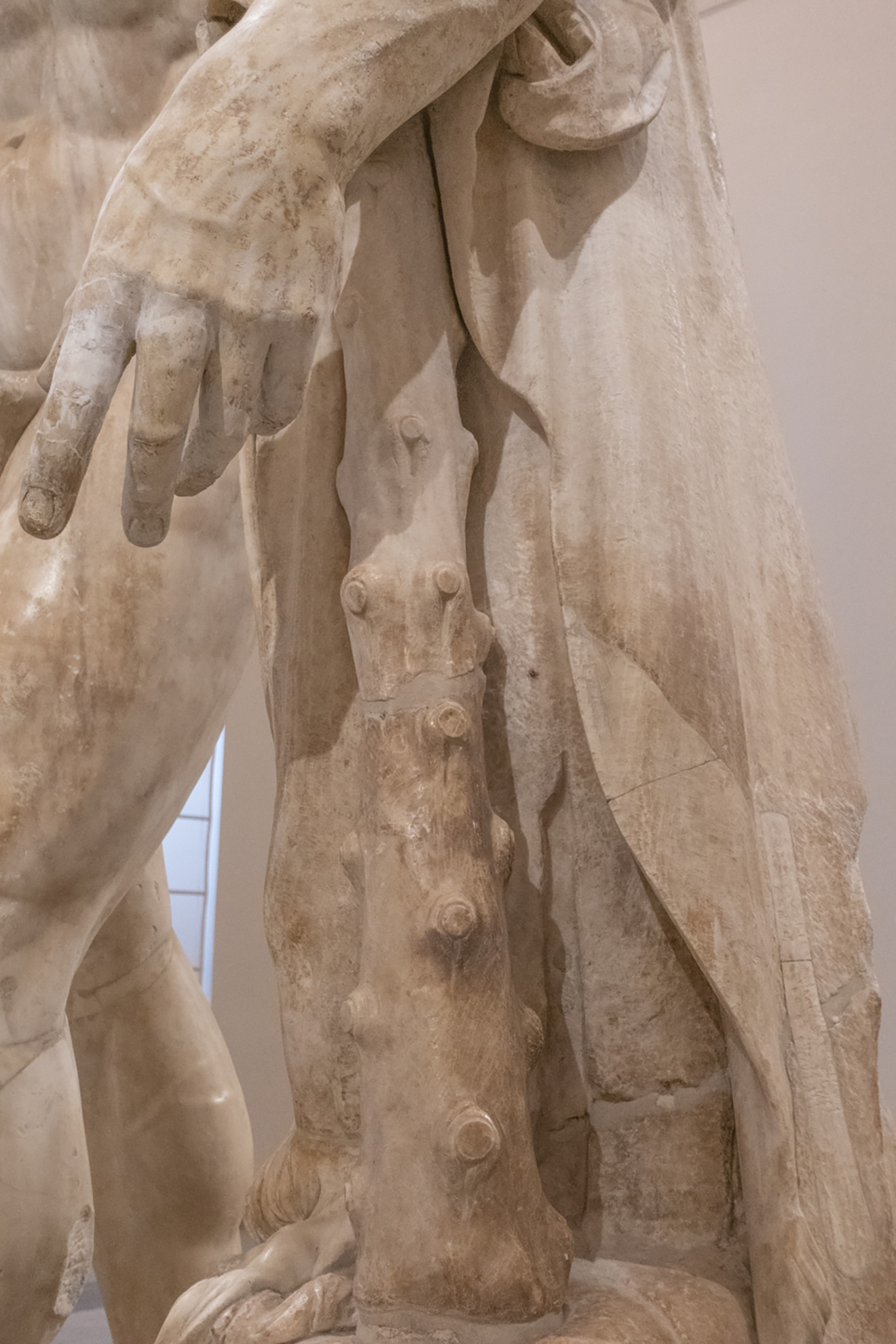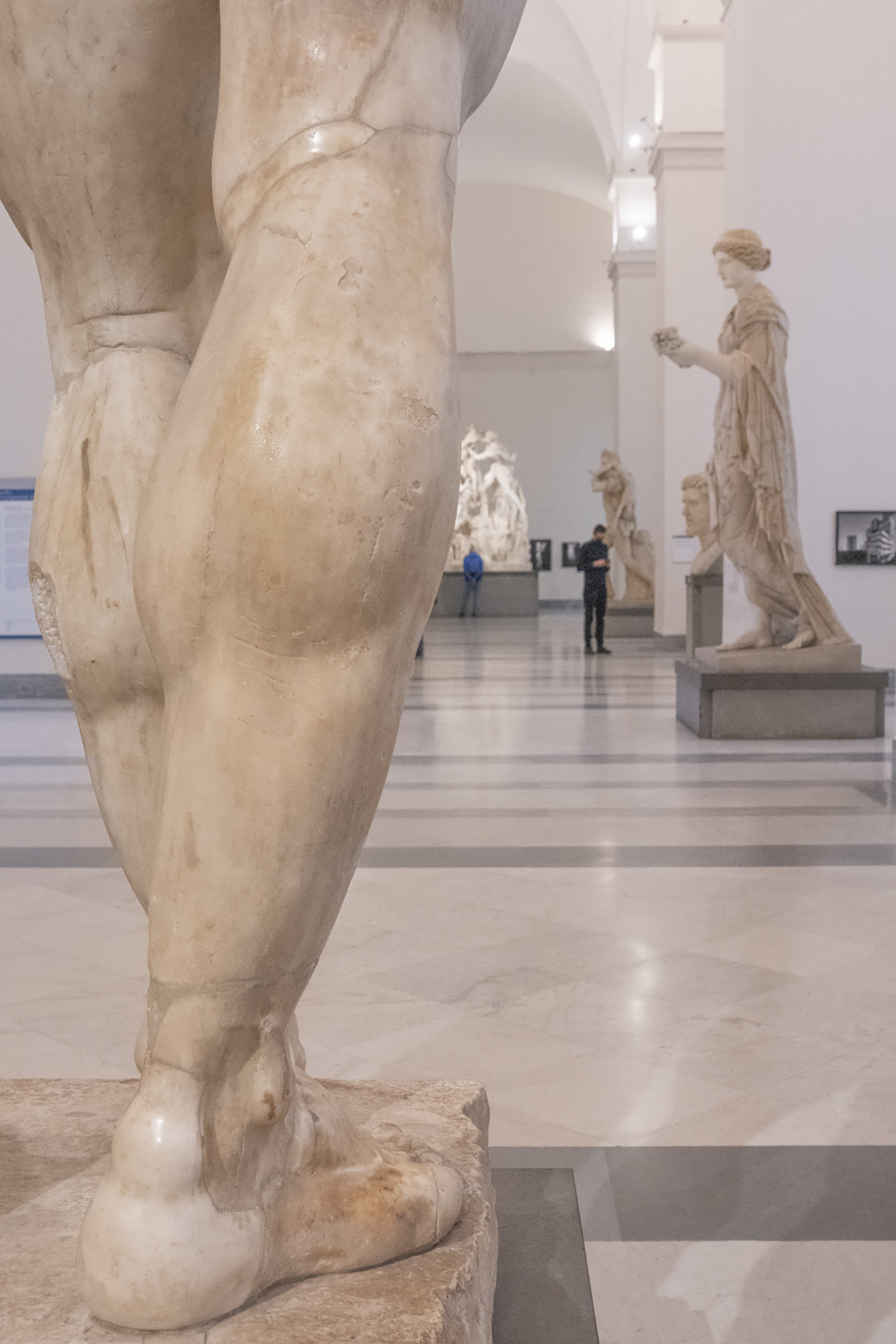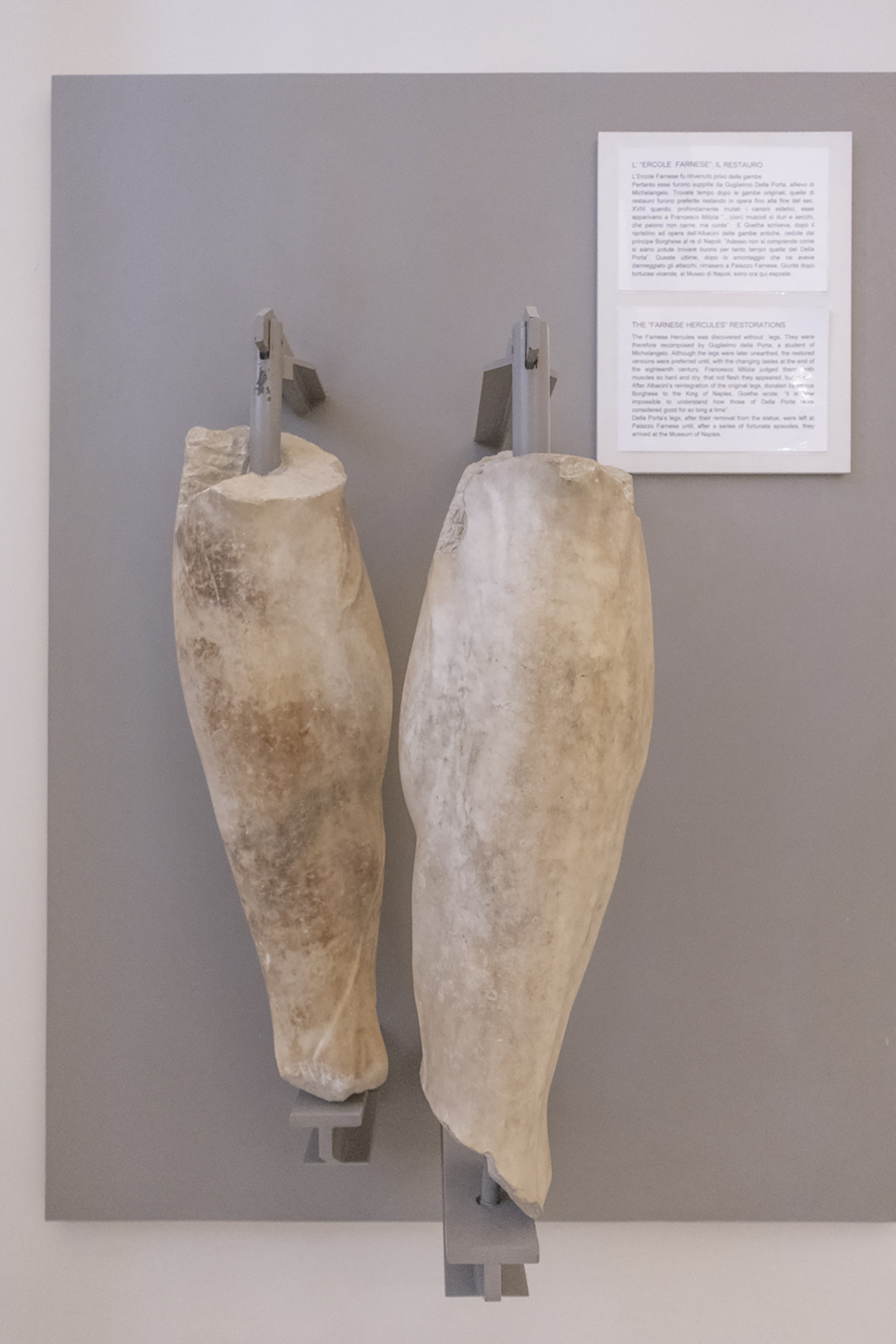If, as someone sang, it takes a beastly physique to withstand the shocks of life, imagine when you find yourself facing a lion, a half-dragon and half-snake monster, a raging bull and a three-headed dog. Whoever is able to overcome all these obstacles will be remembered forever.
Ph. Anna Monaco

In mythology, this is what happens to Hercules, known for his prodigious strength and the hardships he has overcome. The Greek hero was the son of the mortal Alcmene and Zeus. The latter, as was his custom, had seduced the woman by pretending to be her husband Amphitryon and from this union Hercules was born. The child was particularly disliked by Hera and it was precisely because of the latter's jealousy that Hercules had to face the twelve terrible labours.
Ph. Machi di Pace

The club of the Hercules | Ph. Anna Monaco

Instigated to madness by the goddess, he killed his wife and children and to atone for the murders he was forced to pass the difficult tests. According to other traditions, however, the labours were the only way to immortality, as the strong hero was only a demi-god, born of a mortal and a deity.
“One of the most perfect works of antiquity”Goethe
The eleventh test saw Heracles engaged in the Garden of the Hesperides, the guardian nymphs of the place: from here he had to take away three golden apples. In the statue of the Farnese Hercules, exhibited in the National Archaeological Museum of Naples, the fruits of the labour are hidden in Hercules' hand behind his back, while he enjoys a well-deserved rest leaning on the club and the leonine skin.
Hercules holds the three golden apples of the Garden of the Hesperides | Ph. Machi di Pace

It is a marble sculpture of the third century AD, of colossal dimensions, a copy of a bronze by the famous Greek sculptor Lysippus. It bears the signature of Glykon of Athens and comes from the Baths of Caracalla in Rome. The statue came to Naples through the maternal inheritance of Charles of Bourbon and has a "twin", the so-called Latin Hercules, now located in the Royal Palace of Caserta.
The signature of Glycon of Athens on the base of the statue | Ph. Anna Monaco

“Here is your center, here are all the ancient art pieces; only the Farnese Hercules is missing, but we will also have it”.Napoleon thus replied to Antonio Canova who wanted to come back to Italy
This Hercules was found together with other sculptures during Renaissance excavations and exhibited in the Palazzo Farnese in Rome, where it was also admired by many artists for its potency. It was the sculptor Guglielmo Della Porta, a pupil of Michelangelo, who set himself to work on the Hercules and restored it by integrating the missing calves. Today the muscular hero “wears” the original calves that were found as early as the Renaissance, but were replaced only in the 1700s as the restored ones were found to be more pleasing!
The calves of the Hercules | Ph. Anna Monaco

The calves made by Guglielmo Della Porta | Ph. Anna Monaco

Some other small additions have been made, but something else has been lost, though not completely: the multiple colors of the sculpture. In fact, recent diagnostic investigations revealed color on the beard, body and face. Who knows what this colorful cluster of abs, curls and quads must have been like!

